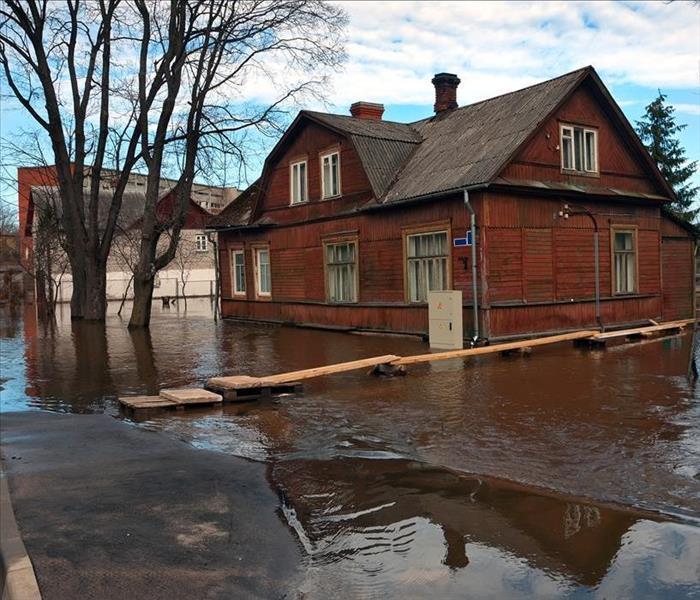What Is Secondary Damage?
3/29/2021 (Permalink)
Water from a flood or leak in a home can cause substantial damage to the structure and contents. The damage directly caused by the initial water event is called primary damage. However, water can also cause other types of damage, such as black mold. These are referred to as secondary damage.
What Secondary Damage Is
This damage is any damage done to your property as a result of a water event after that event has stopped occurring. For example, if your home floods and standing water remains in your home for several days after the flood, the damage caused by that standing water would be considered secondary. There are several common examples of secondary water damage:
- Mold growth
- Corrosion
- Electrical damage
- Material damage
- Wood rot
Mold Growth
Black mold and other types of fungus thrive in wet environments and areas with high humidity, such as homes with standing water from a flood event. Mold can begin growing in a flooded home in as little as 24 hours, which makes it particularly important to dry out your home as quickly as possible. Once mold has begun to spread, you may need the assistance of a mold remediation company in Washington, NC, to remove it.
Other Secondary Damage
Water that seeps into electrical sockets can cause severe damage to the electrical systems of your home. Metal pipes, vents and other fixtures may corrode when exposed to flood water for extended periods of time. Additionally, materials such as wood, drywall, flooring and structural components may crack, sag, buckle or rot. The longer standing water remains in the home, the more likely these problems are to occur.
Standing water and high levels of moisture in your home can lead to black mold and other issues that can further damage your property. Drying out your home quickly can reduce the amount of damage that occurs.






 24/7 Emergency Service
24/7 Emergency Service
